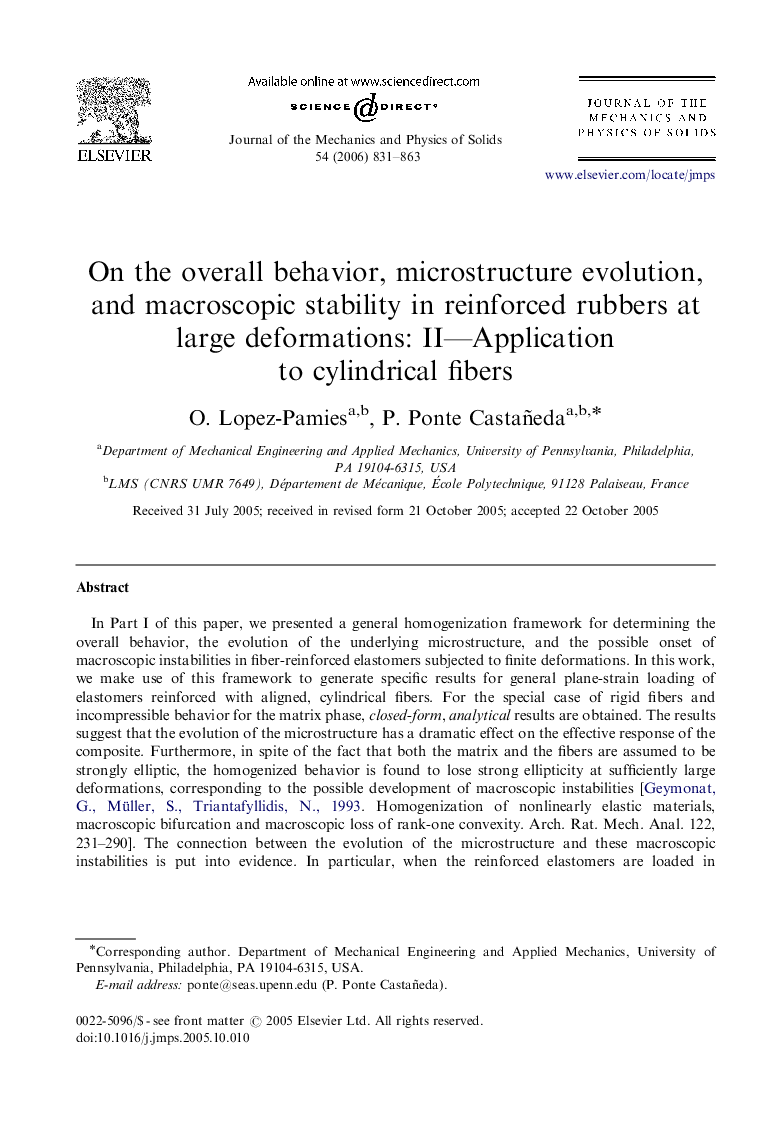| Article ID | Journal | Published Year | Pages | File Type |
|---|---|---|---|---|
| 798510 | Journal of the Mechanics and Physics of Solids | 2006 | 33 Pages |
In Part I of this paper, we presented a general homogenization framework for determining the overall behavior, the evolution of the underlying microstructure, and the possible onset of macroscopic instabilities in fiber-reinforced elastomers subjected to finite deformations. In this work, we make use of this framework to generate specific results for general plane-strain loading of elastomers reinforced with aligned, cylindrical fibers. For the special case of rigid fibers and incompressible behavior for the matrix phase, closed-form, analytical results are obtained. The results suggest that the evolution of the microstructure has a dramatic effect on the effective response of the composite. Furthermore, in spite of the fact that both the matrix and the fibers are assumed to be strongly elliptic, the homogenized behavior is found to lose strong ellipticity at sufficiently large deformations, corresponding to the possible development of macroscopic instabilities [ Geymonat, G., Müller, S., Triantafyllidis, N., 1993. Homogenization of nonlinearly elastic materials, macroscopic bifurcation and macroscopic loss of rank-one convexity. Arch. Rat. Mech. Anal. 122, 231–290]. The connection between the evolution of the microstructure and these macroscopic instabilities is put into evidence. In particular, when the reinforced elastomers are loaded in compression along the long, in-plane axis of the fibers, a certain type of “flopping” instability is detected, corresponding to the composite becoming infinitesimally soft to rotation of the fibers.
